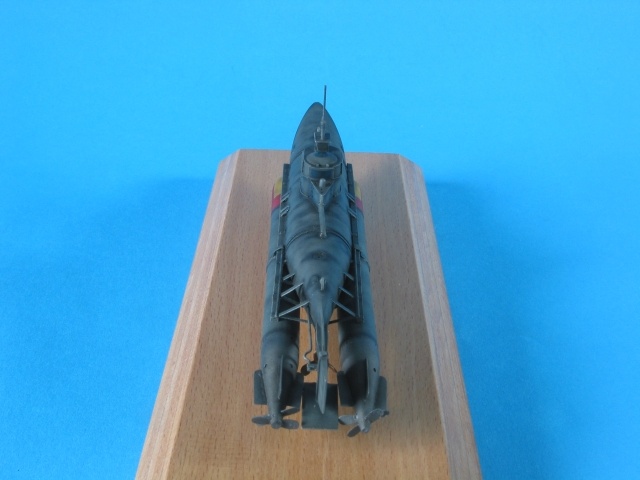
These had a reduced range, to make them light enough for the tiny craft, so the pilot had to get close to his target and surface to attack it, eliminating the element of surprise. Lacking compensating and trimming tanks, Bibers were almost impossible to operate at periscope depth anyway, so the torpedoes had to be launched while surfaced. Other improvements included the addition of a periscope, but it was forward mounted with only 40 degrees of vision, so the operator had no idea what was behind him before surfacing. Biber 90, on display in the Imperial War Museum, was found drifting off Dover in December 1944 with the its pilot dead at the controls.

Carbon-monoxide fumes from the engine poisoned the crew, but, because the symptoms were similar to those of seasickness, the men affected were not necessarily aware they were being gassed.

Usually a diesel motor would propel a U-boat on the surface and recharge its batteries, but an Opel petrol engine was chosen as it was cheap and long-running. Welmans relied on battery power, restricting both speed and range, so the Germans added a 32hp engine to the Biber. However, the Germans never saw the X-Craft actually used in the attack – and these had been substantially larger than the Welman with a four-man crew. In September 1943, midget submarines of the Royal Navy had crippled the battleship Tirpitz anchored in a Norwegian fjord. Midget submarines could be built quickly and cheaply, required just one operator, and were almost impossible to detect using ASDIC. Following ‘Black May’ in 1943, when 25% of the operational U-boats were lost in just one month, Germany was losing submarines faster than it could replace them. It is easy to understand why midget submarines appealed to the Kriegsmarine. Secondly, some of the improvements had unexpected, and ultimately fatal, consequences. There were just two problems with this project. Further development of the Biber was planned which included two-man versions (Biber II and Biber III), these were nothing more than drawing board projects.įrom January through April 1945 the Molch and Biber midget boats went out on 102 sorties, lost 70 of their own and only sank 7 small ships with a total of 491 tons and damaged 2 for 15,516 tons.When the German navy captured a British Welman midget submarine in November 1943, Commander Hans Bartels set about improving its crude design and delivered the prototype Biber (Beaver) in March 1944. The third compartment contained the after diving tank. Between the first and second bulkhead was the main compartment where the operator sat. The bow section contained nothing more than the main diving tank. "The Biber was built in three sections which bolted together. Her is some more information taken from the internet.

I tried to keep the weathering to the Biber itself and less (some fresh scratches) on the torpedoes to give the illusion of a well-used submarine with new torpedoes for the next mission. I don't know what it is with these submarines but they just appeal to me and I have the utmost respect for the men that operated them.Īs for the model, I'm happy the way it turned out. So, I'm back with another midget submarine this time the German Biber from WW2.


 0 kommentar(er)
0 kommentar(er)
